Fredrikson Stallard
‘Reformation’
5th April – 14th May 2019
General inquiries:
info@davidgillgallery.com
Press inquiries:
press@davidgillgallery.com
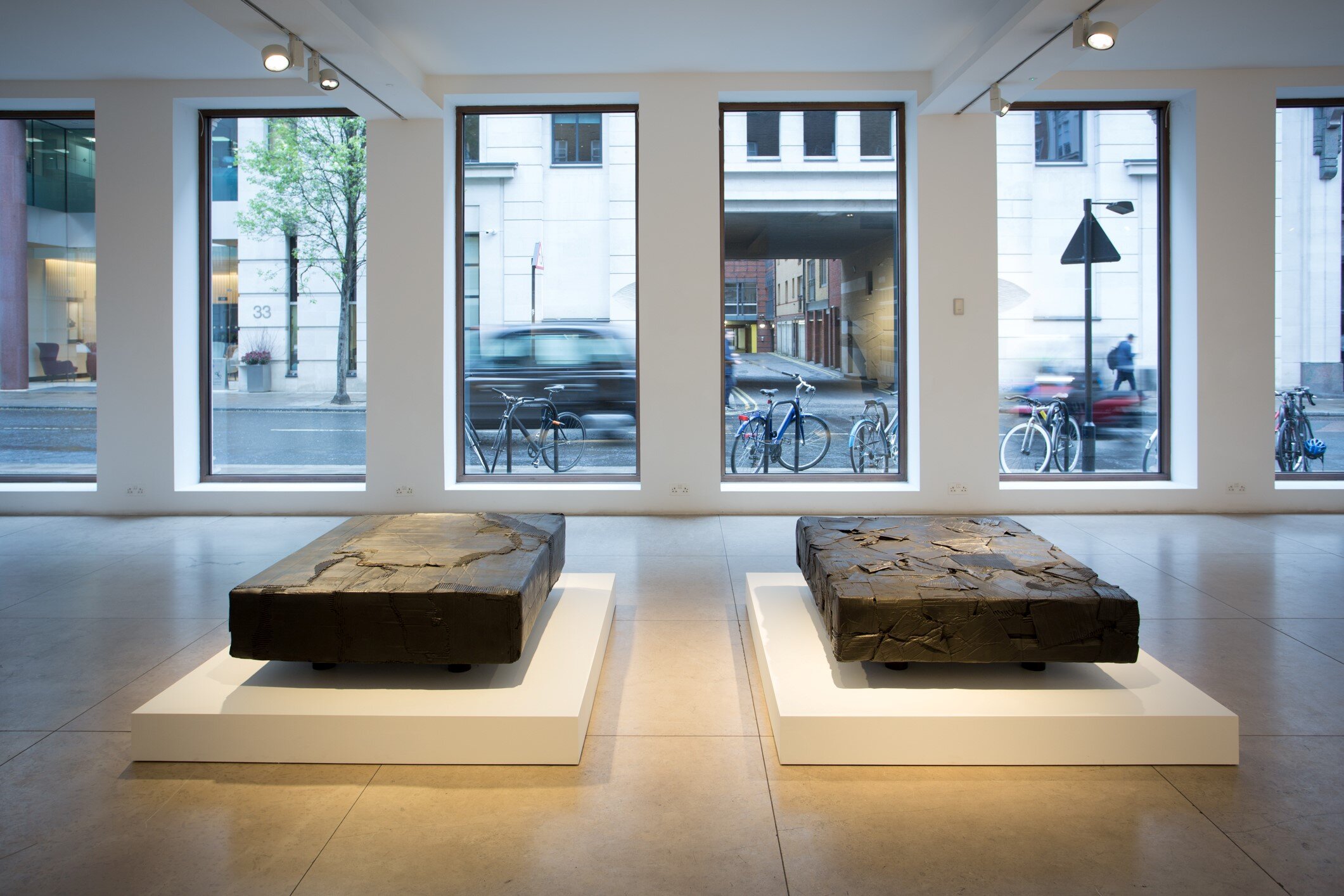
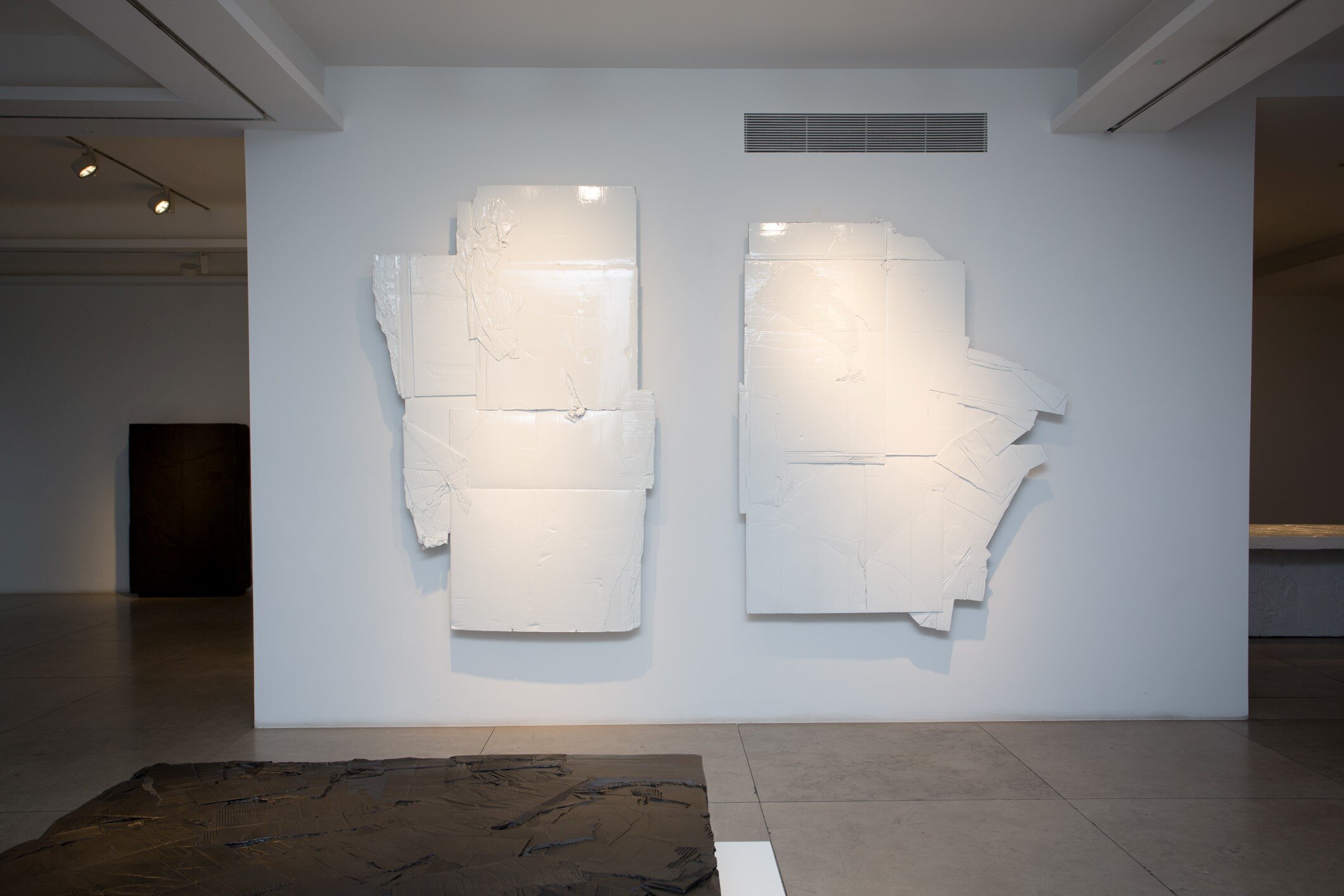
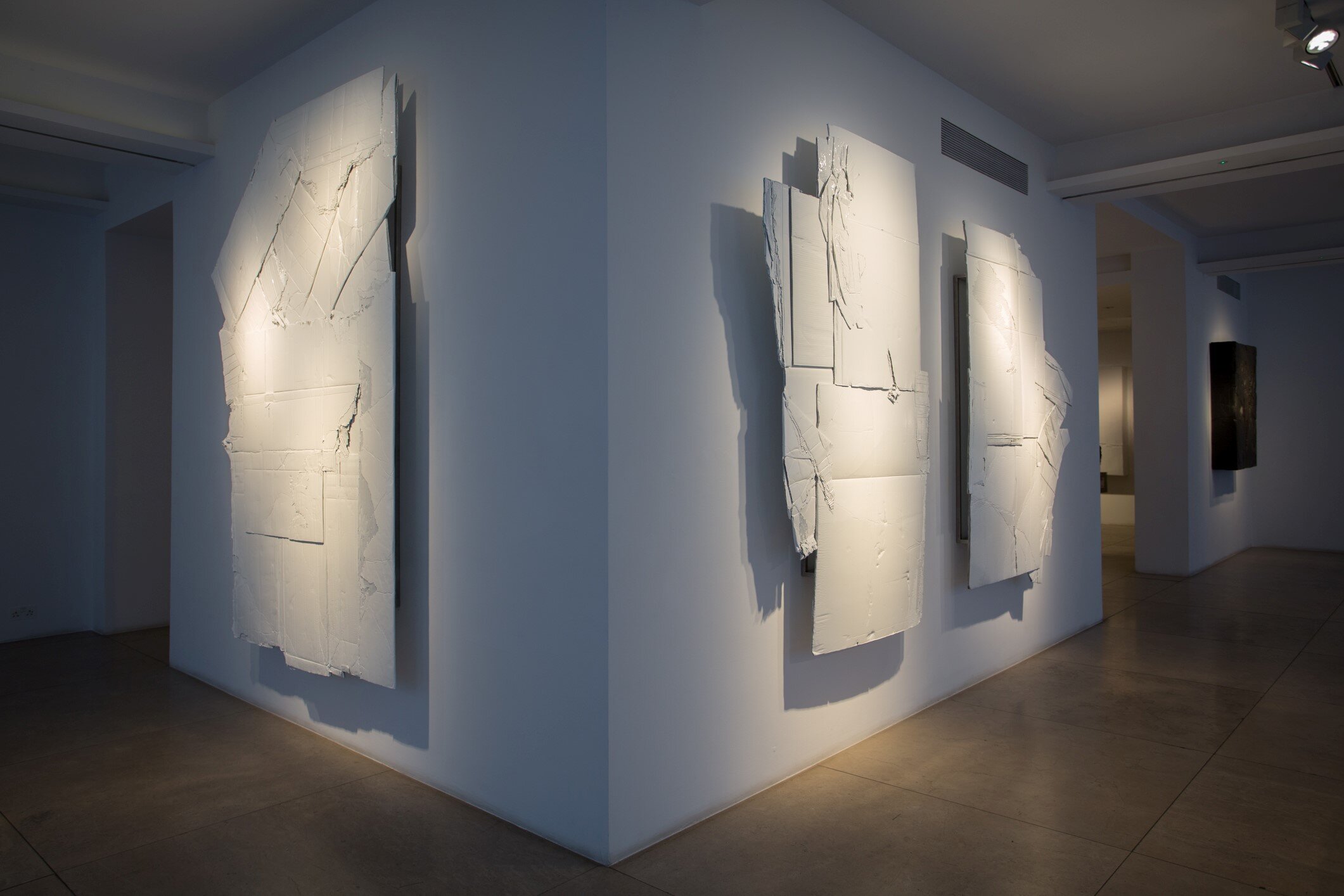
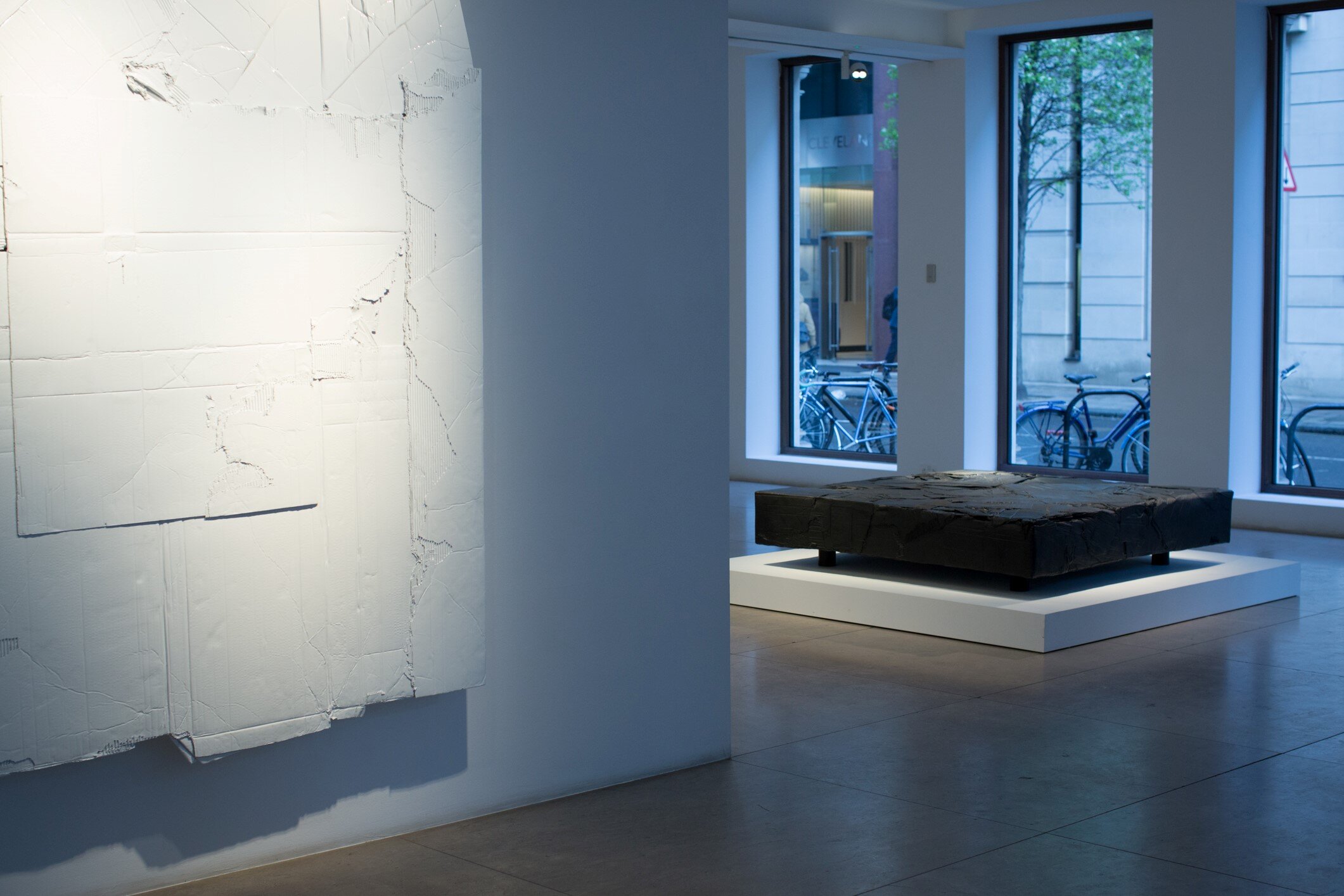
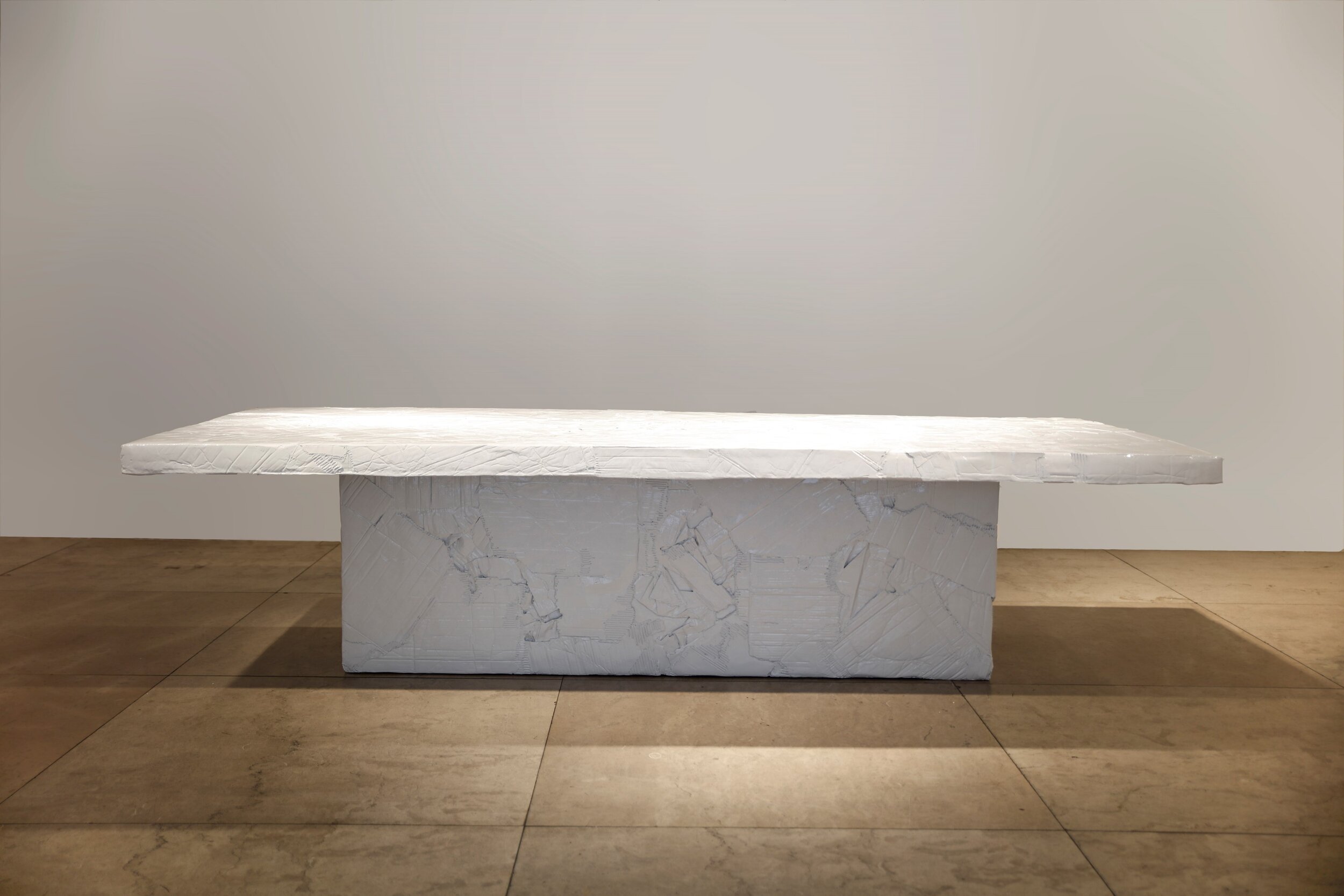
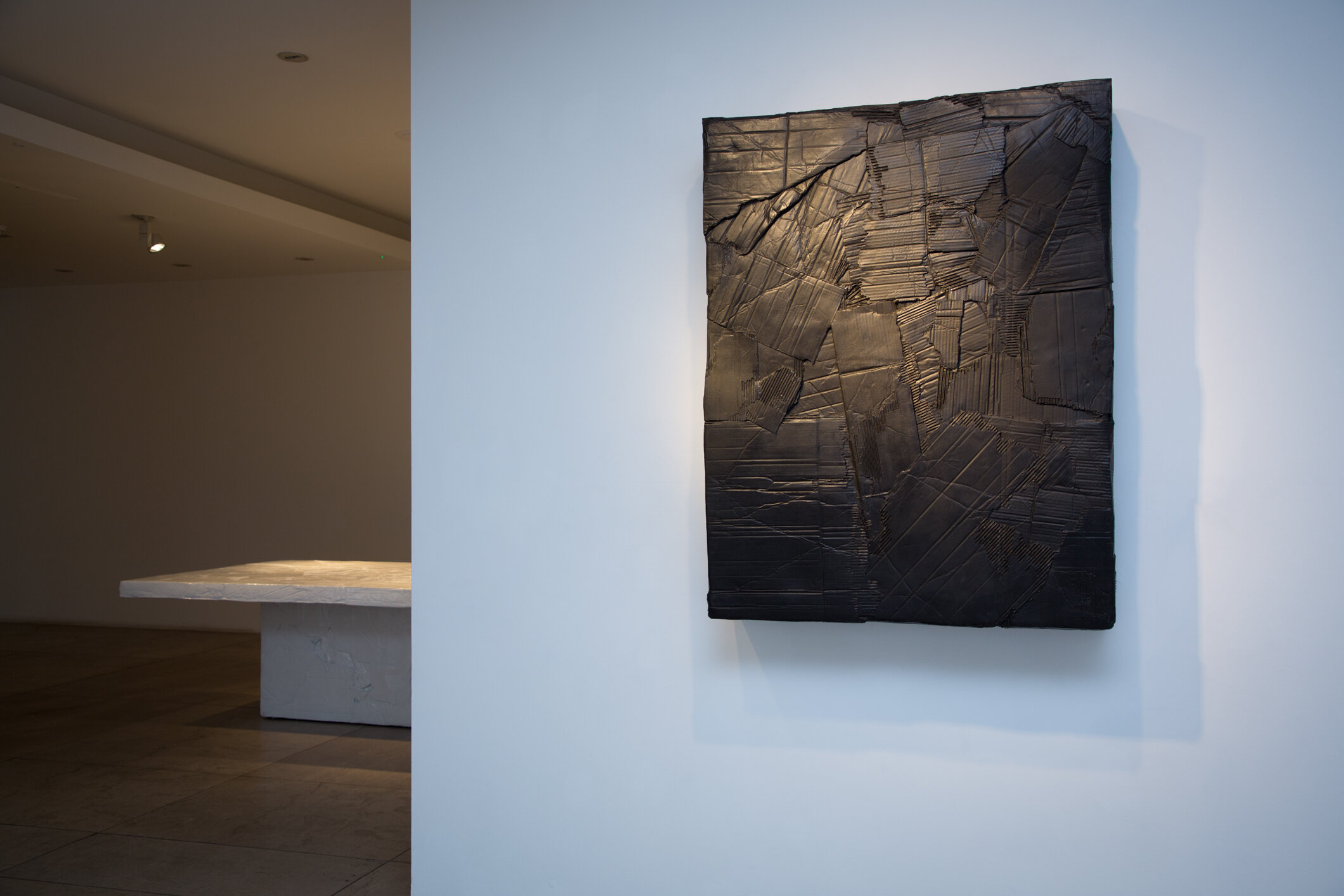

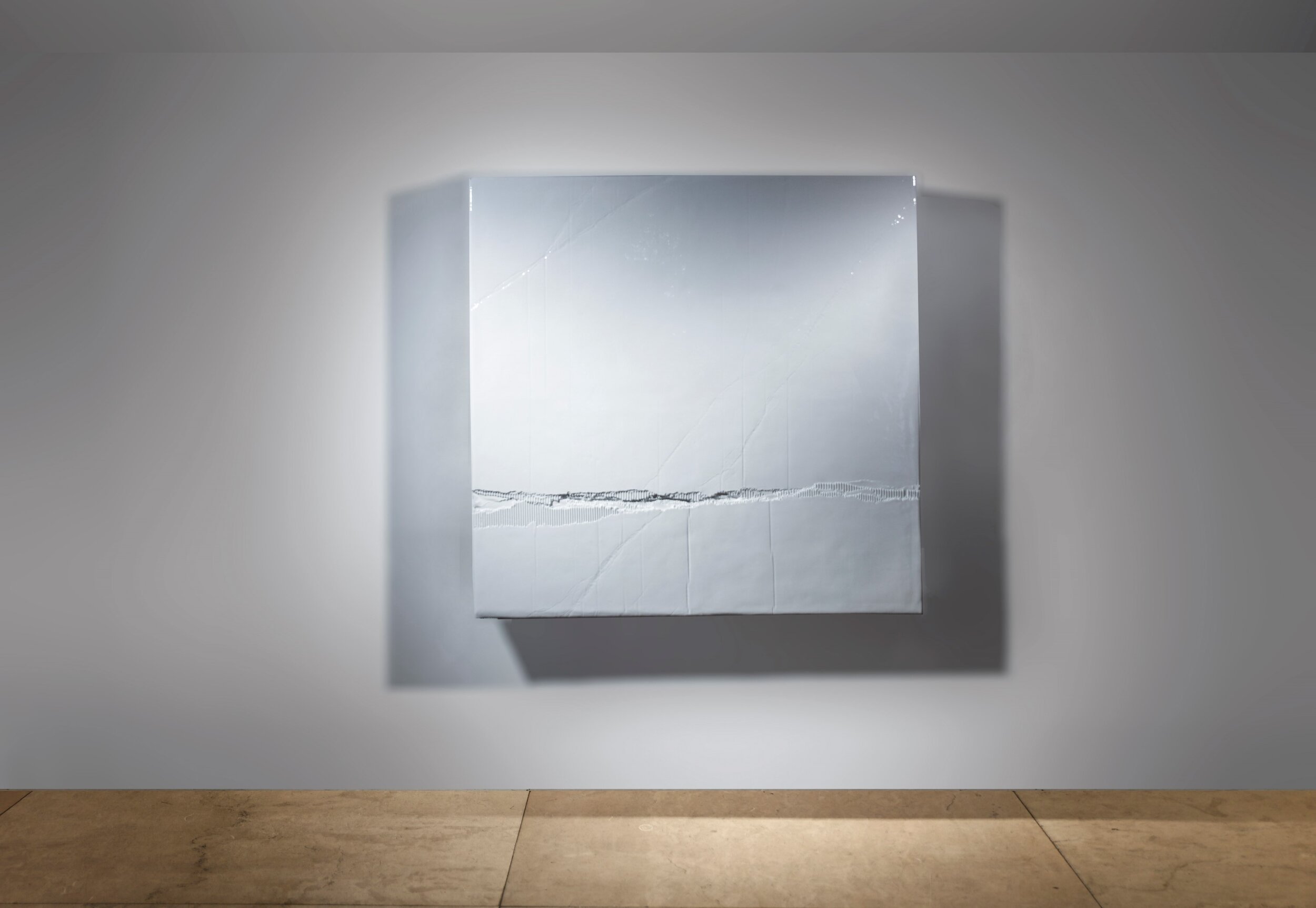

David Gill Gallery presents REFORMATION, its sixth solo show by avant-garde partnership Fredrikson Stallard. The exhibition features eleven monolithic sculptural works made from cardboard, cast in bronze and finished in black, patinated bronze, polished bronze, or painted white. This new, monochrome body of work comprises coffee tables, cabinets, dining tables and three wall-mounted pieces, including a diptych, which are not functional but, positioned differently, could be table tops. Furniture or art? Perception is all and the answer, clearly, is both.
REFORMATION refers to the deconstruction of cardboard boxes and the process of reconstruction that follows. Having sourced vast amounts of cardboard on the streets of London, the artists break it down, flatten it out, rip, tear, fold, crumple and then layer it, to create monumental compositions. They call this ‘reverse painting’ because the cardboard responds much like oil paint and the collaging is done back-to-front. The pieces are then placed face-down inside industrial steel-pressing machines and are finally ready to be cast.
During the pressing, some slippage occurs, introducing an element of chance. ‘Materials contain a certain autonomy, in the way they move and form themselves,’ says Stallard. ‘Incredible shapes appear without your full intention, but you learn how to encourage certain forms and discourage others. It’s a kind of choreography.’
Celebrated for their lyrical, muscular manipulations of materials such as glass, acrylic, wood, polyurethane and stainless steel, the designers describe cardboard as extraordinarily versatile, with a complex language of its own. Display boxes for crisps are thin and malleable; a one-off found piece has this ‘beautiful undulation, almost like a car bonnet;’ FedEx boxes from Asia are rough in texture and tear well. ‘You have to be brutal when you rip the card, to really expose the corrugation,’ says Fredrikson, ‘but we never force a material to do something it doesn’t want. We interact with our materials in an intuitive, symbiotic way - that’s how you access their energy and materiality.’
Much of the cardboard bears the scars of its journey so far. One section, used in the diptych, carries a long gouge, like a stick dragged through wax; other fragments are dense with labels, post marks, scribbled notes. This eminently disposable material, humble but unifying in its ubiquity, there for our every delivery or house move, is usually allotted a short lifespan. By casting it in bronze, Fredrikson Stallard perform a kind of alchemy, but they also acknowledge its inherent value as a crucial 21st century material, the carrier of our precious cargo. This reassessment of value echoes their engagement with, or dismissal of, the art-design hierarchy: who is to say you can’t hang a table on the wall? What gives an object its status or meaning?
Such playful interrogation is reminiscent of Hussein Chalayan’s table dress (2000), and the designers share with Chalayan an approach that transcends traditional delineations of the fine and decorative arts. Their sculptural furniture stakes out new territory between art and design, where utility increases artistic merit. Human touch wears patina to a soft shine, altering and enriching colour; by placing objects on a piece of furniture, we add our own stories; uneven surfaces ensure that we engage with a table, mentally and physically.
These beautiful, blackened, fossilised works also bear witness; they are a steam-punk reflection on the modern world. REFORMATION carries obvious religious connotations - a church bloated with excess in need of stripping back to its core values – and there are parallels to be drawn with contemporary society. Rampant consumerism defined the 20th century in many ways; we are now beginning to think about damage and repair. For all its pared-down, post-apocalyptic edge, this series is filled with energy and emotion; the artists ask us not just to think but to feel.
About Fredrikson Stallard
Patrik Fredrikson and Ian Stallard met at Central St Martin’s in 1995, where Stallard specialised in ceramics and Fredrikson in product design, having studied architecture in Copenhagen. Their collaboration began almost at once and they produced their seminal Log Table, in 2001, acquired in 2009 by the Victoria and Albert Museum for their permanent collection.
Fredrikson Stallard launched their practice in 2005, and joined David Gill Gallery in 2006; that same year, their shocking-pink Bergere armchairs, made from rubber and highly polished steel, were exhibited at the Design Museum.
Since then, their work has been acquired by the French National Art Collection, MoMA San Fransicso, the Kvadrat Collection, Copenhagen, and twice by the Victoria and Albert Museum; and been exhibited at the Museum of Art and Design, New York, and the Belvedere Museum, Vienna.


